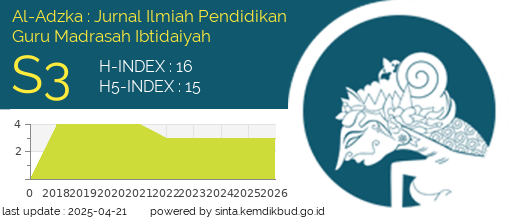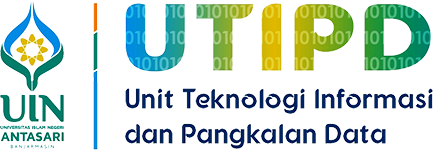Investment of Self-Confidence in Cingkrik Rawa Belong Pencak Silat for Elementary School Students
DOI:
https://doi.org/10.18592/aladzkapgmi.v11i1.3983Abstract
This article aims to describe thoroughly the value of self-confidence in Pencak Silat activities for elementary school students. The scope includes the value of self-confidence in Pencak Silat Cingkrik Rawa Belong. The research method used is a literature review and field visits that include observation and interviews. The research subjects were the head of the Lengkong Arts and Culture House Foundation and the research object was elementary school students who were active in Pencak Silat activities in elementary schools. The research sites are the Cingkrik Rawa Belong Lengkong Cultural Art House and the Primary School in Tangerang. The instruments used were interviews and observation. The result of this research is that the value of self-confidence in Pencak Silat activities is the value obtained by children from training or Pencak silat activities and then retrained through the experience of the championships that have been followed The use-value contained in the Cingkrik Pencak Silat activity can be used as learning to instill confidence in elementary school students.References
Adi, W. (2010). Batavia 1740: Menyisir Jejak Betawi. PT Gramedia Pustaka Utama.
Adzimatinur, N. (2017). Penanaman Karakter Percaya Diri Pada Program Ekstrakurikuler Pencak Silat.
Departemen Pendidikan & Kebudayaan RI. (1996). Kamus Besar Bahasa Indonesia (Balai Pust). Jakarta.
Fatchurahman, M. (2012). Demokratis dan Kenakalan Remaja. Persona, Jurnal Psikologi Indonesia, 1(2), 77–87.
Gapi, B. (2015). Prosiding Seminar Nasional 9 Mei 2015 Membangun Kepercayaan Diri Siswa Melalui Kegiatan Ekstrakurikuler. 430–442.
Gristyutawati, Anting Dien, D. (2012). Persepsi Pelajar Terhadap Pencak Silat Sebagai Warisan Budaya Bangsa Sekota Semarang Tahun 2012. 1(3).
Gubernur Banten. (2014). Peraturan Gubernur Banten Nomor 15 Tahun 2014 Tentang Pengembangan Kurikulum Muatan Lokal Seni Budaya Banten Bagi Pendidikan Menengah Se-Provinsi Banten (2014th Ed.). Serang.
Gubernur Banten. (2018). Peraturan Gubernur Banten Nomor 12 Tahun 2018 (2018th Ed.). Provinsi Banten.
Kintani, Y., Ali, M., & Endang, B. (2013). Sikap percaya diri dalam proses pembelajaran pada anak usia 5-6 tahun segedong. 1–11.
Kristiono, N. (2018). Modul Permainan Dan Olahraga Pencak Silat.
Kriswanto, E. S. (2015). Pencak Silat. Yogyakarta: Pustaka Baru Press.
Kusnoto, Y. (2017). Internalisasi Nilai-Nilai Pendidikan Karakter. 4(2), 247–256.
Lubis, J. dan H. W. (2016). Pencak Silat (Ed.3,Cet.3). Jakarta: PT Rajagrafindo Persada.
Mardotillah, M., & Zein, D. M. (2017). Silat: identitas budaya, pendidikan, seni bela diri, dan pemeliharaan kesehatan. 18(2), 121–133.
Mulyana. (2014). Pendidikan Pencak Silat Membangun Jati diri dan Karakter Bangsa (Cet. 2; N. N. Muliawati, Ed.). Bandung: PT. Remaja Rosdakarya.
Nawi, G.J. (2016). MAEN PUKULAN Pencak Silat Khas Betawi (Cet.1). Jakarta: Yayasan Pustaka Obor Indonesia.
Nawi, Gusman J. (2019). Budaya Sejarah Silat Betawi. Retrieved from https://sejarahjakarta.com/2019/05/07/sejarah-silat-betawi/#
Pratama, R. Y. (2018). Perkembangan Ikatan Pencak Silat Indonesia ( IPSI ) Tahun 1948-1973. 6(3).
Rachmawati, S. N. I. (2016). Upaya Pembentukan Karakter Siswa Melalui Kegiatan Ekstrakurikulerr Pencak Silat Di Mi Sultan Agung Babadan Baru Sleman. UIN Sunan Kalijaga Yogyakarta.
Rohmah, J. (2018). Pembentukan Kepercayaan Diri Anak Melalui Pujian. Martabat: Jurnal Perempuan Dan Anak, 2(1). https://doi.org/10.21274/martabat.2018.2.1.117-134
Sambiroto, N., Arifin, M. Z., Apsari, R. W., & Setya, M. Y. (2019). Analisis Peran Guru Dalam Membangun Karakter Kepercayaan Diri Siswa Kelas V SD. Kalam Cendekia, Volume 7, hlm. 9 –18.
Sudiana, I. K. dan N. L. P. S. (2017). Keterampilan Dasar Pencak Silat (Ed.1,Cet.1). Depok: PT. Rajagrafindo Persada.
Widyanti, I. G. A. F., Sudarma, I. K., & Riastini, P. N. (2017). Kecenderungan Kualitas Rasa Percaya Diri Siswa Kelas V Sd Negeri 2 Sukasada Kabupaten Buleleng.
Downloads
Published
How to Cite
Issue
Section
License
Authors who publish with this journal agree to the following terms:
- Authors retain copyright and grant the journal right of first publication with the work simultaneously licensed under a Creative Commons Attribution 4.0 International that allows others to share the work with an acknowledgement of the work's authorship and initial publication in this journal.
- Authors are able to enter into separate, additional contractual arrangements for the non-exclusive distribution of the journal's published version of the work (e.g., post it to an institutional repository or publish it in a book), with an acknowledgement of its initial publication in this journal.
- Authors are permitted and encouraged to post their work online (e.g., in institutional repositories or on their website) prior to and during the submission process, as it can lead to productive exchanges, as well as earlier and greater citation of published work.












